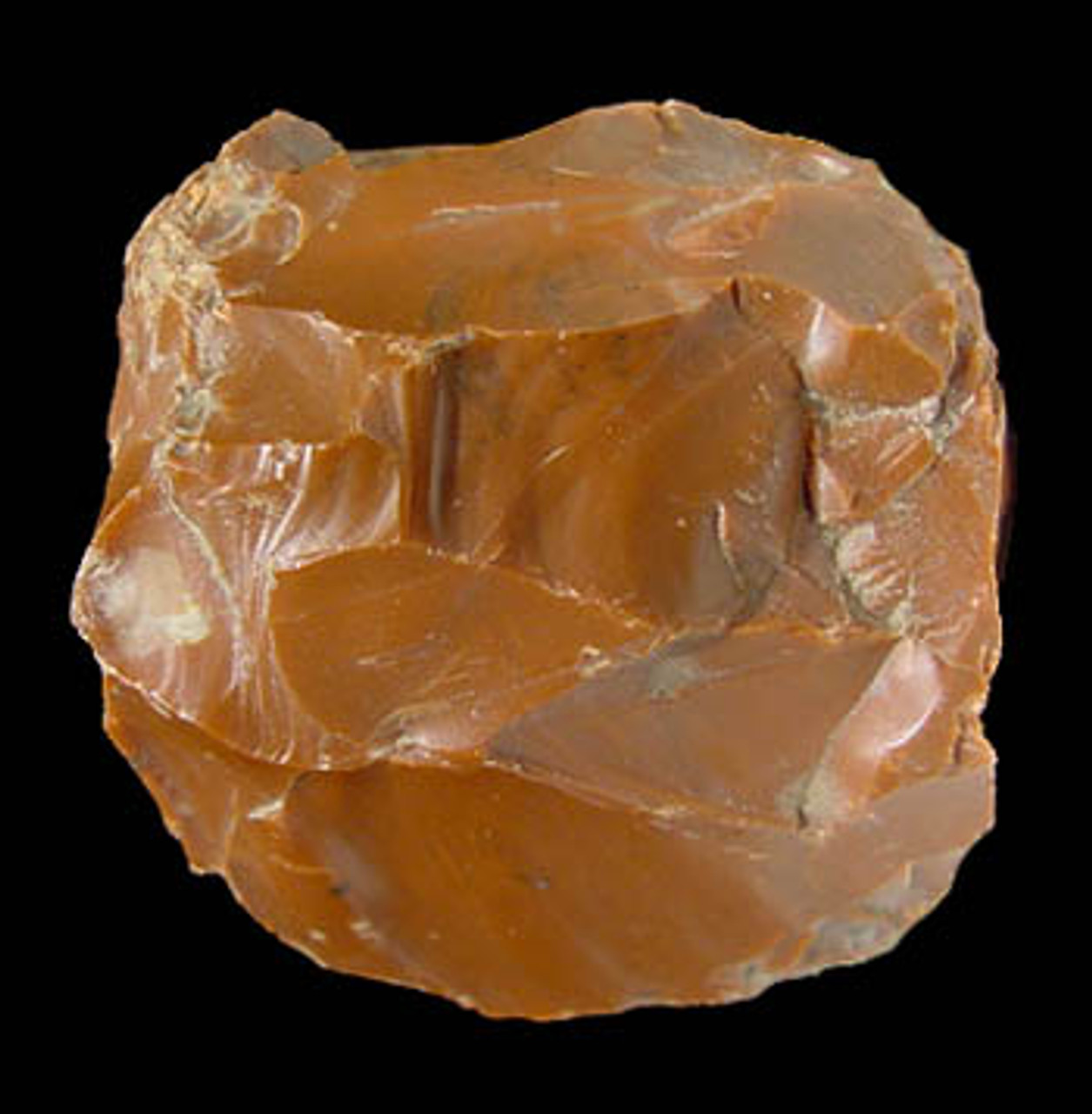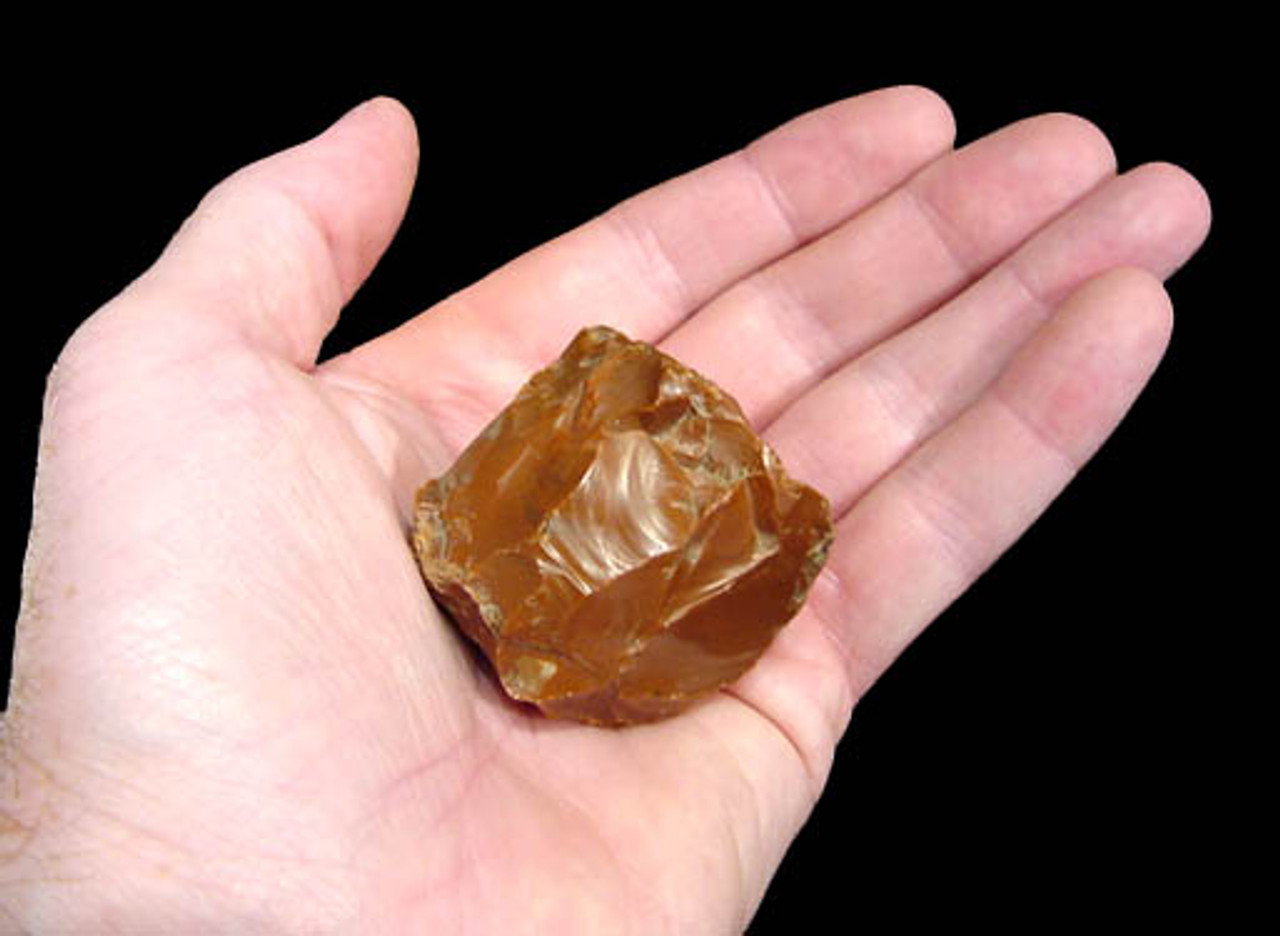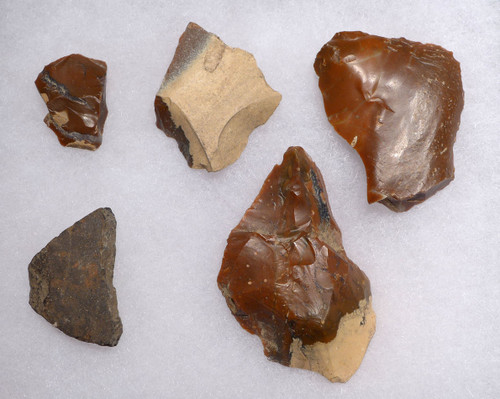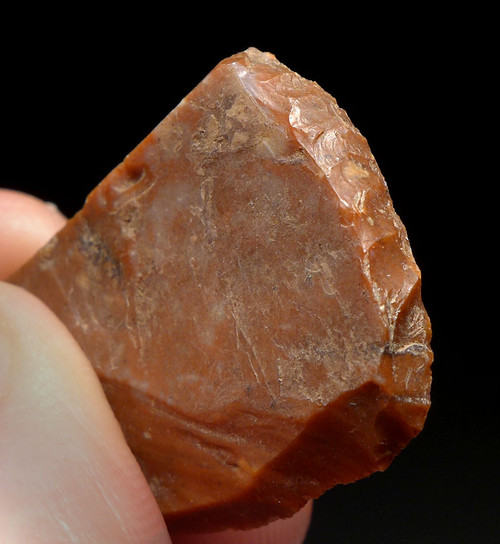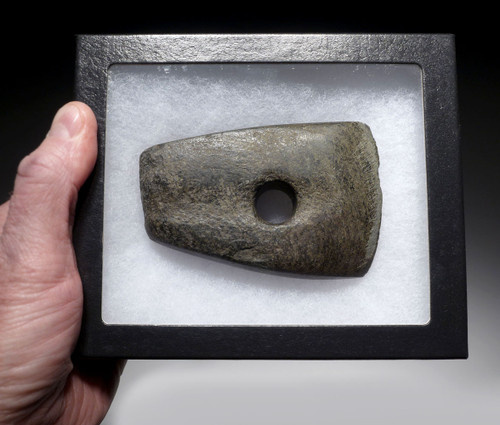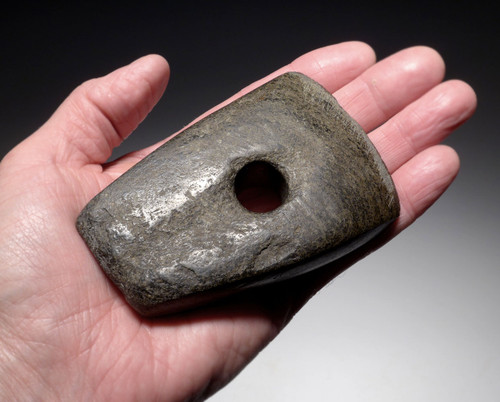Product Description
ITEM #
|
N007
|
||
ID
|
European Neolithic Tool
|
||
FOUND
|
Veszprem County - North Transdanubia, Hungary
|
||
AGE
|
NEOLITHIC: 7400 - 7000 years ago
|
||
SIZE
|
1.9" x 1.6" x 1.45"
|
||
CONDITION
|
INTACT AND COMPLETE -
|
||
NOTE
|
SCARCE TOOL CORE OF UNIQUE LITHIC!
|
||
INCLUDES DISPLAY BOX - Actual Item - One Only
Comes with a certificate of authenticity / information sheet |
|||
CLICK HERE TO LEARN MORE ABOUT EUROPEAN NEOLITHIC TOOLS
This beautiful brick red Neolithic stone tool was collected from an Early Neolithic settlement site. It was made thousands of years ago out of radiolarite mined from a prehistoric mining site (pictured below) in Hungary dating back over seven thousand years ago. This tool was fashioned by modern humans of the first farming and stock-herding society in North Central Europe.
This specimen was retrieved from a previously unknown site that has since been fully excavated by a nearby museum in Hungary and is now completely devoid of tools and artifacts. The site was a former farming settlement over 7000 years old and was rich in stone tools, pottery and animal remains from slaughter by the prehistoric inhabitants.
Most likely, this will be the only tool core from this culture that we will offer for sale. Being of such beautiful gem-grade material, specimens of this magnitude and appearance are amongst the most prized ancient tools of any culture. Couple this with such a rare site and culture and you can see why such an artifact is so rare and limited. Several faces of this blocky specimen exhibit linear ridges from use in manufacturing long blades from parallel struck flakes. The entire piece displays a wonderful soil sheen and is dense with a warm, rich brick red hue accented by some areas of milky white swirls. There is no modern damage, repair or restoration. These unique, gem-grade prehistoric tools are very rare and come from a culture that has yet to be fully studied. Genuine tools from the Linear Pottery Culture are rarely available for public sale and represent an excellent opportunity to acquire a genuine stone tool artifact from some of the world's first farming peoples!
The Early Neolithic mines in Veszprem were valued for the beautiful radiolarite which is unquestionably one of the most visually attractive raw materials to be found in Central Europe. Within Central Hungary it is one of the few sources of higher quality material. Local mining began in the Paleolithic, although very few sites from this era are know in the region. The first period with intensive use in the region and further away, is the Early Neolithic Linear Pottery Culture (Linearbandkeramik or LBK).
The earliest food-producing communities to appear on the North European Plain were those of the Linear Pottery Culture, which had also colonized the loess belt across central Europe between 5400 and 5000 B.C.. This cultural horizon spread rapidly over large parts of Central and Western Europe during the middle of the sixth millennium B.C., taking with it some of the raw materials from its region of origin in Hungary. There are vast areas in which Linear Pottery settlements have not yet been found.
Permanent settlement is an important feature of these early agriculturalist societies, often providing clear evidence of plant and animal domestication. These peoples built massive timber longhouses for shelter demonstrating the technological advances made during the early Neolithic. Artifacts are often found in or around these dwellings, notably figurines, decorated pottery, carved bone and stone tools.
The ceramics, flint tools, and ground stone tools found on the Linear Pottery sites of the North European Plain are essentially similar to those found elsewhere in east-central Europe. Unlike the large Linear Pottery sites of the loess belt, substantial longhouses have not been found in the lowlands. Instead, most of the lowland Linear Pottery sites are relatively small collections of shallow pits. The pits often have dense concentrations of refuse with relatively large shards and many reconstructable vessels. All the same, they do not appear to represent the same level of commitment to particular settlement locations as do the longhouse settlements of the loess belt.
 US DOLLAR
US DOLLAR
 EURO
EURO
 AUSTRALIAN DOLLAR
AUSTRALIAN DOLLAR
 CANADIAN DOLLAR
CANADIAN DOLLAR
 POUND STERLING
POUND STERLING


